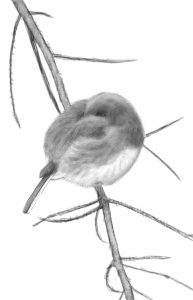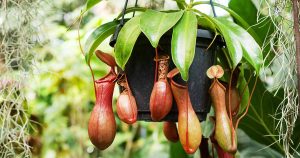
If you’re growing apples it might come as a surprise when I say that you should be throwing away some of the young apples on your tree.
I know, it sounds weird that you spend all this time waging war against pests and disease, provide impeccable winter care, feed and water appropriately, and now I’m telling you to cut off and throw out some of the fruits of your labor? Hear me out.
“Thinning” refers to the process of pruning off some of the developing fruits on your tree to encourage better production and tree health.

We link to vendors to help you find relevant products. If you buy from one of our links, we may earn a commission.
If you’ve ever noticed that your tree produces a ton of fruits one year and hardly any the next, thinning helps prevent that, too.
In our guide to growing apples, we discuss everything you need to know about cultivating these trees in your landscape.
We’re now going to discuss one important aspect of apple tree care that might seem counterintuitive: thinning.
Trust me, it’s worth it. Here’s what I’ll cover:
Why Thinning Is Important
Modern apples (Malus x domestica) are bred to produce a lot more and much larger fruits than their wild cousins.
This abundance is great for us gardeners, but it has consequences for the tree. A large number of big fruits requires a lot of energy and nutrient resources.

Commercial growers thin their fruit because they want to produce larger, more flavorful and colorful fruits to please consumers.
Some home growers don’t care if their apples are large and visually appealing, and if that describes you, then you don’t need to worry about thinning.
There are only a limited number of leaves on each tree, and these can only support so many developing fruits.
As a result, if there are more fruits than the tree can support the individual apples will be smaller than they could be otherwise. They also tend to be less flavorful, and the color might not be quite as perfect.

If you don’t thin the pommes intentionally, the tree might do it for you, by dropping some immature fruits if there are more than the tree can handle.
The other reason for thinning is to prevent biennial bearing. This is when a tree has a huge crop one year and then produces hardly any the next. If you thin out the fruit, the tree will bear more evenly from year to year.
If you’ve left your tree to its own devices in the past, then you know that if you leave too many fruits on the tree, it can weigh the limbs down and even cause breakage. That’s especially true if you live in an area that receives early snow in the fall.
So, thinning can also help protect your tree from breakage.
It’s also important to keep up on your pruning, which you can read about in our guide. An appropriately pruned tree will require less thinning.
When to Work
Thinning has the largest impact if the task is completed when the fruit is smaller in diameter than a quarter – which is about 25 millimeters or just under an inch.
If the fruit is larger than this, the process will not be as effective.

The best way to determine when to thin is to wait until the petals have fallen from the tree and then start checking every five days.
Once the pommes are large enough to handle, you can start snipping or pinching them.
Typically, your window for thinning ends about 30 days after petal drop, with the window closing rapidly after the developing fruits reach about 15mm or just over a half inch in diameter.
If you miss the ideal timing, you can still thin the fruits, but just know that the impact on the growth and next year’s bearing will be minimal.
The Process
In some regions, commercial growers use chemicals to thin their apples. By spraying a lime sulfur mixture, carbaryl, ethephon, or 6BA, they can stop pollination in some of the flowers, which results in fewer apples.

For us home growers, we’re going to need to use good, old-fashioned manual labor.
Wipe your tools using a 10 percent bleach solution (nine parts water to one part bleach), roll up your sleeves, grab a ladder, if necessary, and head outside.
Examine each branch, looking for each cluster. Most trees will have individual clusters of developing fruits coming off spurs or the branch tips depending on whether the apple is tip-bearing or spur-bearing.

You want the clusters to be about four inches apart – or one per spur – and each cluster should have two or three pommes at most. You can thin to just one fruit per spur without compromising quality if you wish.
As you work, retain the pommes that look the healthiest. Any shrunken, malformed, or particularly small fruits should be removed.
When removing clusters or individual fruits, snip them off carefully with your pruners.
Try to cut right at the stem. It can be hard to access the area between the individual fruits, so you might find that it’s easier to pinch them off with your fingernails or use a pair of scissors.
Use caution as you work because you don’t want to break the spur or tip as you’re removing the apples.
While you can remove as many as you want, be careful of overdoing it which can result in overly large fruits with a mushier texture.
Less is More
If you’re committed to growing apples, thinning is usually a part of regular maintenance to ensure a decent harvest.
There are some cultivars out there like ‘Cripps Pink’ that don’t require thinning because they have larger leaves and tend not to overproduce, but the vast majority will need at least some work.
What is your goal with thinning your apples? Are you hoping to stop the biennial bearing cycle? Maybe you just want bigger fruits? Let us know in the comments section below.
I sincerely hope you feel confident in how and why you should thin your trees after reading this guide.
If so, and you’d like to learn more about growing apples, check out some of these guides next:





